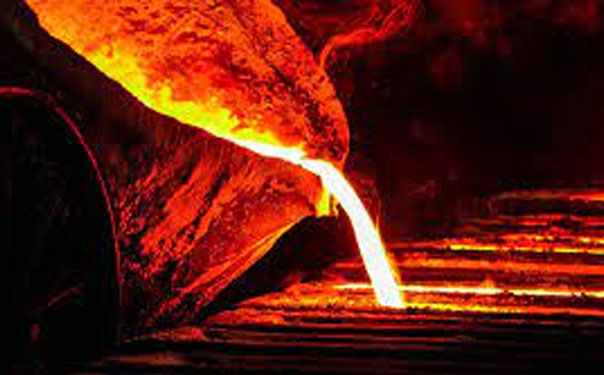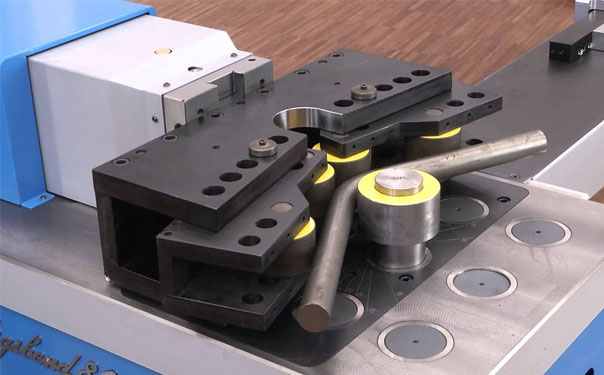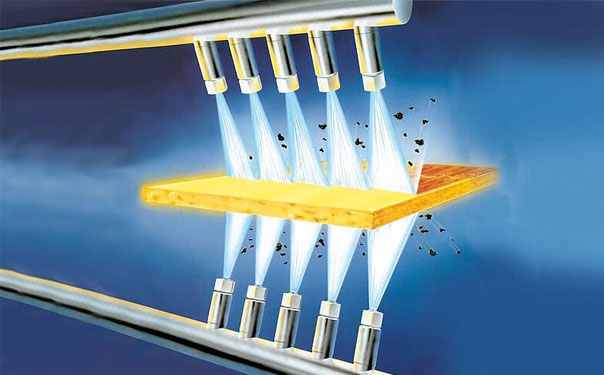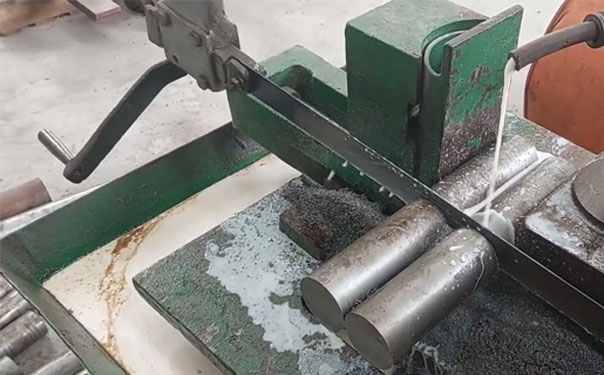Stainless Steel 321 / 321H Bars are high-quality stainless steel bars known for their excellent resistance to corrosion and oxidation, particularly in high-temperature environments. They offer superior strength, durability, and stability, making them suitable for various industrial applications, including aerospace, chemical processing, and automotive engineering. The inclusion of titanium in their composition enhances their heat resistance, while the dual-phase structure of 321H further enhances their mechanical properties.
Stainless Steel 321 and 321H bars are extremely flexible materials with numerous applications and characteristics, belonging to austenitic stainless steel and featuring outstanding corrosion resistance, strength and mechanical properties at both higher temperatures as well as lower ones. These bars exhibit exceptional corrosion resistance as well as outstanding mechanical properties at both higher and lower temperatures - characteristics which set them out from competitors in their field.

One of the key attributes of Stainless Steel 321 and 321H bars is their remarkable corrosion resistance. They offer resistance against organic acids, inorganic acids, oxidizing environments as well as various industrial environments like chemical processing, pharmaceutical manufacturing, food production and petroleum refining - ideal features that make these bars highly sought-after products for various industries like chemical processing, pharmaceutical development and petroleum refining.
These bars also exhibit excellent resistance to intergranular corrosion, making them perfect for applications that involve exposure to high temperatures such as heat exchangers, furnace parts and exhaust systems. Stainless Steel 321 and 321H bars stand out with their exceptional strength and durability, boasting excellent tensile strength as well as yield strength to provide reliable performance even under demanding environments. In addition, their toughness makes them suitable for applications requiring impact resistance.
Stainless Steel 321H, as the high carbon version of 321, boasts enhanced high temperature strength and creep resistance compared to its regular equivalent, making it particularly suitable for applications involving elevated temperatures such as aerospace components, thermal processing equipment and heat treatment furnaces. Stainless Steel 321 and 321H bars offer exceptional weldability and formability, enabling easy welding using common techniques such as arc welding, resistance welding and gas tungsten arc welding - without risk of intergranular corrosion within their heat affected zone.
Stainless Steel 321 and 321H bars find broad application across numerous industries. Common applications for them are manufacturing structural components, fasteners, bolts, nuts, shafts, valves. Their resistance to oxidation and scaling at elevated temperatures also makes them suitable for fabrication of aircraft exhaust systems, jet engine parts as well as other aerospace components.
Apple Steels is a renowned manufacturer and supplier of high-quality Stainless Steel 321 and 321H Bars in Mumbai, India. These bars offer exceptional corrosion resistance, strength, and durability, making them indispensable materials in diverse industrial applications. With a focus on reliability and performance, we ensure that our Stainless Steel 321 and 321H Bars meet the highest quality standards, providing customers with superior products for their specific needs.

Melting and Casting
Steel and alloying metals are loaded into an electric arc furnace. Once in the furnace, the metal is heated to a specific temperature above its melting point, usually in excess of 2800°F.

Forming
Most cast steel is formed by hot rolling—the slab, bloom, or billet is heated and passed through large rollers, stretching out the steel into a longer, thinner form.

Heat treatment
Heat treatment strengthens rolled stainless steel by recrystallizing the deformed microstructure. Most stainless steel is heat treated by annealing.

Descaling
A rolled piece of stainless steel acquires a layer of oxidized “mill scale,” which needs to be washed away to restore a shiny surface finish.

Cutting or Machining
Stainless steel is cut to a specified shape and size. The stainless steel can be sheared with circular knives, sawed with high-speed blades, or blanked with punches.
| SS Bar Wire Standard | ASTM A276 / A479, ASME SA276 / SA479 |
| Stainless Steel Bar Dimensions | EN, DIN, JIS, ASTM, BS, ASME, AISI |
| Stainless Steel Round bar size | Diameter: 3-~800mm |
| Stainless Steel Hex Bar size | 2-100mm A/F |
| SS Flat bar size | Thickness: 2 -100mm |
| Width: 10 to 500mm | |
| Stainless Steel Square bar size | 4 to 100mm |
| SS Angle bar size | 3mm*20mm*20mm~12mm*100mm*100mm |
| Hollow Bar | 32mm OD x 16mm ID to 250mm OD x 200mm ID) |
| Stainless Steel Rectangular Size | 33 x 30mm to 295 x 1066mm |
| SS Bars Finish | Cold (bright) drawn, centreless ground, hot rolled, smooth turned, peeled, slit rolled edge, hot rolled annealed, Rough Turned, Bright, Polish, Grinding, Centreless Ground & Black |
| SS Bar Tolerance | H8, H9, H10, H11, H12, H13K9, K10, K11, K12 or as per clients’ requirements |
| Tempers | Tempers range from dead soft annealed to ultra spring temper |
| Rolled Stainless Steel Flat Bars Condition | Hardened & tempered, annealed |
| Cold Rolled Bar Technique | Stainless Steel Hot Rolled, Cold Drawn, Cold Rolled, Forged Round Bar, Rod |
| Stainless Steel Rounds Bar Form | Round, Rod, T-Bar, Channel Bar, Precision Ground Bar, Flat Bar, Square, Blocks, Round Rod, Rings, Hollow, Triangle, Rectangle, Hex (A/F), Threaded, Half Round Bar, Profiles, Billet, Ingot, I/H Bar, Forging etc. |



| STANDARD | WERKSTOFF NR. | UNS | JIS | EN |
| SS 321 | 1.4541 | S32100 | SUS 321 | X6CrNiTi18-10 |
| SS 321H | 1.4878 | S32109 | SUS 321H | X12CrNiTi18-9 |
| Grade | C | Mn | Si | P | S | Cr | N | Ni | Ti |
| SS 321 | 0.08 max | 2.0 max | 1.0 max | 0.045 max | 0.030 max | 17.00 - 19.00 | 0.10 max | 9.00 - 12.00 | 5(C+N) – 0.70 max |
| SS 321H | 0.04 – 0.10 | 2.0 max | 1.0 max | 0.045 max | 0.030 max | 17.00 - 19.00 | 0.10 max | 9.00 – 12.00 | 4(C+N) – 0.70 max |
| Density | Melting Point | Tensile Strength | Yield Strength (0.2%Offset) | Elongation |
| 8.0 g/cm3 | 1457 °C (2650 °F) | Psi – 75000 , MPa – 515 | Psi – 30000 , MPa – 205 | 35 % |

Electrical Industry

Automotive Industry

Construction Industry

Defence Industry

Pharmaceutical Industry

Petroleum Industry

Petrochemical Industry

Milk & Dairy Industry
Austria, Azerbaijan, Belarus, Belgium, Bulgaria, Croatia, Cyprus, Czechia/Czech Republic, Denmark, Estonia, Finland, France, Germany, Greece, Hungary, Ireland, Italy, Latvia, Liechtenstein, Lithuania, Luxembourg, Malta, Moldova, Monaco, Netherlands, Norway, Poland, Portugal, Romania, Russia, Serbia, Slovakia, Spain, Sweden, Switzerland, Turkey, Ukraine, United Kingdom.
Afghanistan, Armenia, Azerbaijan, Bahrain, Bangladesh, Bhutan, British, China, Egypt, Hong Kong, India, Indonesia, Iran, Iraq, Israel, Japan, Jordan, Kuwait, Kyrgyzstan, Lebanon, Macau, Malaysia, Maldives, Mongolia, Myanmar, Nepal, North Korea, Oman, Philippines, Qatar, Russia, Saudi Arabia, Singapore, South Korea, Sri Lanka, Taiwan, Thailand, Turkey, United Arab Emirates, Vietnam.
Algeria, Angola, Botswana, Burkina Faso, Burundi, Cameroon, Central African Republic, Egypt, Eswatini, Ethiopia, Gambia, Kenya, Liberia, Libya, Madagascar, Mauritania, Mauritius, Morocco, Mozambique, Namibia, Niger, Nigeria, Rwanda, Senegal, Seychelles, South Africa, Tanzania, Tunisia, Uganda, Zambia, Zimbabwe.
Antigua and Barbuda, Bahamas, Barbados, Belize, Canada, Costa Rica, Cuba, Dominica, Dominican Republic, El Salvador, Grenada, Guatemala, Haiti, Honduras, Jamaica, Mexico, Nicaragua, Panama, Saint Lucia, Saint Vincent and the Grenadines, Trinidad and Tobago, United States of America, Argentina, Bolivia, Brazil, Chile, Colombia, Ecuador, Guyana, Paraguay, Peru, Suriname, Uruguay, Venezuela.